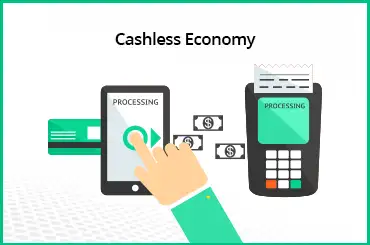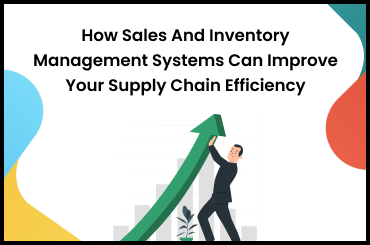Producer Surplus is similar to a bonus for sellers. Businesses earn producer surplus when they sell their products for more money than expected. It results in additional earnings. In simple terms, it's the difference between what a producer earns by selling their goods and the minimum they'd be willing to accept while selling. The bigger the difference, the happier the producer. This surplus helps businesses grow in the market.
What Is a Producer Surplus?
Producer Surplus is the extra profit a business earns when they sell their products for more than it costs them to make. Producer surplus example: a manufacturer makes circuit boards (for electronic devices) for Rs 100 each and sells them for Rs 200. The Rs 100 extra is their producer surplus. Producer surplus economics can change depending on market conditions, competition, and the pricing strategy employed by producers. Understanding producer surplus helps businesses analyze market dynamics and pricing strategies to improve their operations and profitability.
Understanding Producer Surplus
While the economic concept of producer surplus may seem difficult to understand, it's pretty straightforward.
1. Profit Beyond Costs
Producer surplus measures the extra profit. It gains by selling goods at a price higher than their production costs. Producer surplus economy benefits both consumer and producer.
2. Market Power
This surplus reflects how much control a business has over the prices of its products. The more market power, the more surplus they can enjoy.
3. Price Flexibility
When prices in the market change, so does the producer surplus. Businesses need to adapt to these shifts to improve their earnings and stay competitive.
4. Competitive Advantage
Understanding producer surplus helps businesses know where they stand compared to their rivals. It's like having a map in a business competition.
5. Strategic Pricing
By knowing about producer surplus, businesses can make smart choices about how to price their products to make the most money.
6. Economic Impact
The producer surplus isn't just about one business. It can affect the whole market. A big surplus might indicate inefficiency.
7. Profit Optimization
It's finding the right point between what you make and what you spend so you can make the most money possible.
Read Also: Warehouse Financing: Definition, Example, vs. Warehouse Lending
Consumer Surplus and Producer Surplus
Consumer Surplus and Producer Surplus are two important ideas in economics. Consumer Surplus is the difference between what a consumer is ready to pay for a good or service and what they finally pay. It represents the extra value or benefit consumers receive when they pay less than their maximum price. Imagine a manufacturer plans to sell a smartphone at Rs 20,000. However, due to efficient production and cost savings, they managed to sell it to consumers at Rs 15,000. Consumers experience a consumer surplus of Rs 5,000. It is the additional value they gained by paying less than what they were initially willing to.
Let's now define producer surplus. Producer Surplus is the extra profit a producer makes by selling a product. It is a price higher than the least amount they are willing to accept.
Imagine a shoe manufacturer makes a pair of sneakers for Rs 500 but sells them to retailers for Rs 700. The Rs 200 surplus represents the additional gain beyond the production cost. It contributes to the manufacturer's overall profits and business sustainability.
Simply said, Consumer Surplus and Producer Surplus both show that people profit from trading in markets.
Read Also: Job Costing Explained
Producer Surplus Example
Let's study some real-life Producer Surplus examples.
In the manufacturing industry, let's say a company produces a smartphone for Rs 10,000 per unit. They sell it to retailers at Rs 15,000 per unit. The producer surplus here is Rs 5,000 per unit.
It reflects the profit the company makes above its production cost. This surplus contributes to covering other business expenses and improving the company's financial stability. It allows for future growth and innovation.
How Do You Measure Producer Surplus?
The formula to calculate Producer Surplus is:
Producer Surplus = Total Revenue - Total Variable Costs
Where:
- Total Revenue is the total income a manufacturer receives from selling goods or services.
- Total Variable Costs are the total costs directly associated with producing the goods or services, including materials, labor, etc.
Or, equivalently, for a single unit:
Per-unit Producer Surplus = Selling Price per Unit - Variable Cost per Unit
Where:
- The Selling Price per Unit represents the price at which the product sells each unit.
- Variable Cost per Unit is the cost associated with producing one unit of the product, including materials, labor, etc.
Let's define the consumer and producer surplus formula in more detail.
Imagine an electrical manufacturer that produces light bulbs. They sell each bulb for Rs 30, but it only costs them Rs 10 to make one. The profit for each bulb is Rs 20 (selling price minus production cost).
To find out the total profit for all the bulbs they sell, simply multiply the profit per bulb by the total number of bulbs sold. If they sell 100 bulbs, the total profit is Rs 2,000 (100 bulbs x Rs 20 profit each).
Calculating this profit helps the electrical manufacturers understand how much extra money they're making by selling their products at a higher price than their production costs. It's a straightforward way to calculate a company's profitability in the electrical manufacturing industry.
Read Also: Inventory Financing: Definition, How It Works, Pros, and Cons
What Is Producer Surplus Simply Put?
Producer surplus is the additional cash that producers get when they sell their goods for more than it costs to produce them. The company can use the extra funds to expand the business, improve products, or even lower consumer prices.
Uncovering the Significance of Producer Surplus
When businesses are successful, they may add more employment, produce better goods, and even decrease costs. Therefore, everyone benefits from it. You'll be aware that the Producer Surplus played a role in the making of the next tasty dessert, fun toy, or luxury vehicle.
FAQs on Producer Surplus
1. Is Producer Surplus the same as profit?
No, they're not the same, but they're related. Profit: This is the amount a business earns after subtracting all expenses, including production, labor, and overhead costs, from the total revenue.
Producer Surplus: This specifically refers to the difference between the selling price of a product and its production cost. It's the extra amount a business earns by selling a product for more than it costs to make.
2. How does Producer Surplus impact the economy?
When businesses have a higher Producer Surplus, they're more likely to invest in expansion, create jobs, and innovate. This, in turn, benefits the overall economy. It helps by:
- Stimulating growth
- Increasing employment opportunities
- Leading to better products
- Lower prices for consumers
3. Can government policies influence Producer Surplus?
Yes, government policies, such as taxes, subsidies, and regulations, can affect Producer Surplus. For example, subsidies can increase Producer Surplus by lowering production costs. Taxes can reduce it by increasing the cost of doing business.
4. Can Producer Surplus be negative?
Yes, Producer Surplus can be negative in some situations. Sellers often charge higher prices for products than the minimum amount they are willing to accept. It results in producer surplus.
5. How does Producer Surplus benefit businesses?
Producer Surplus benefits businesses by increasing their profits. It allows for investment in growth and innovation.
6. How do changes in supply affect Producer Surplus?
An ncrease in supply raises Producer Surplus as businesses. It can sell more goods at higher prices ultimately benefiting producers.















